

4.7M MULTIPURPOSE FOLDABLE LADDER
WITHSTANDING PLATFORMSCTLADRM47PD
SAFETY & WARNINGS
Stepladder
- Never stand with one foot on the front side and one foot on the rear side of the ladder (straddling).
- Never stand on the top or above the second rung.

Straight ladder
- Never stand on the top three rungs.
- The ladder should be set at an angle of approximately 75 degrees.
- Take extra care when using the shorter positions, as the stabiliser bar is not in contact with the wall.

Stand-off ladder
- Intended for reaching over flower beds, painting windows, clearing gutters, etc.
- Ensure that the rubber feet at the top are firmly and evenly pressed against the wall.
- The position is NOT suitable for using the scaffolding plates.

WARNING: To avoid serious injury or death, please read these instructions and observe all warning labels on the product before use. Retain this manual for future reference.
General warnings
- Never use the ladder while under the influence of alcohol or drugs of any kind.
- The user should be in a good condition to use this ladder.
- Never set up the ladder in front of doors that are not locked.
- Do not use ladder jacks with this ladder.
- Pushing or pulling anything while on the ladder or scaffold may cause the ladder to tip and the user to fall. Use extreme caution if you must push or pull from the ladder.
- Never attempt to jump, walk, or move ladder while on it. If you need to move the ladder, get off first. Move it and then reposition.
- To avoid losing balance and/or tipping the ladder or scaffold, never overreach. Always stay balanced while on the ladder. Keep your body centred between the side rails.
- Never use the ladder as a brace in any way.
- Never place yourself or allow anyone to stand or walk under the ladder whilst in use.
- This ladder is not a toy and is not meant for use by or near children. Never leave ladder and scaffold set up and unattended.
- Do not stand on the ladder while releasing the locking mechanisms.
- Do not attempt to switch ladder positions whilst on the ladder.
- Never use stairs if they are not level. This could cause the ladder to tip or cause you to lose your balance.
- Only use ladder assembled in the positions illustrated in this guide.
- As a straight ladder, never stand on or above the third rung from the top. As a step ladder, never stand on or above the second rung from the top.
- Always wear shoes that have a good grip while using the product. Avoid wearing loose clothing that could dangle and get caught.
- It is always advisable to have another person to hold the bottom of the ladder for added security.
- Metal conducts electricity. Do not let this ladder or any of its parts contact live electrical wires.
- Maximum weight capacity for this ladder is 100kg. The weight of user plus tools and materials should not exceed 100kg.
- Always ensure all locking mechanisms are in the locked position before stepping on it or applying the weight of any kind.
- The stabiliser bars must be properly and securely fitted before use.
- The scaffold plates must be fitted when using the ladder in positions that require them (see diagram in this manual).
- Do not use any attachments, components or accessories not sold or recommended by Kogan.com with this ladder.
- Inspect all parts before each use. Do not use if any parts of the ladder are missing, damaged or worn in any way.
- Never attempt to fix a damaged ladder. Always have a qualified repair person fix the damaged ladder.
- Dispose of the ladder if it is exposed to excessive heat (such as house fires) or corrosive agents (like acids or alkalis).
- Use extreme caution when using in windy, rainy, or icy conditions.
- Always use a firm grip and face the ladder whenever possible.
- Always set the ladder on a surface that is level, stable and dry.
- Never place the ladder on a slippery surface or try to increase the height of the ladder by placing anything under the stabiliser bars.
- Always use extreme caution when using the ladder on a protective surface, such as a thick carpet or rug. This may prevent the rubber feet from ripping the surface properly.
- Always use caution when getting on or off the ladder.
OVERVIEW
Scaffold positionsDO NOT use the ladder in these positions without the scaffold plates in place.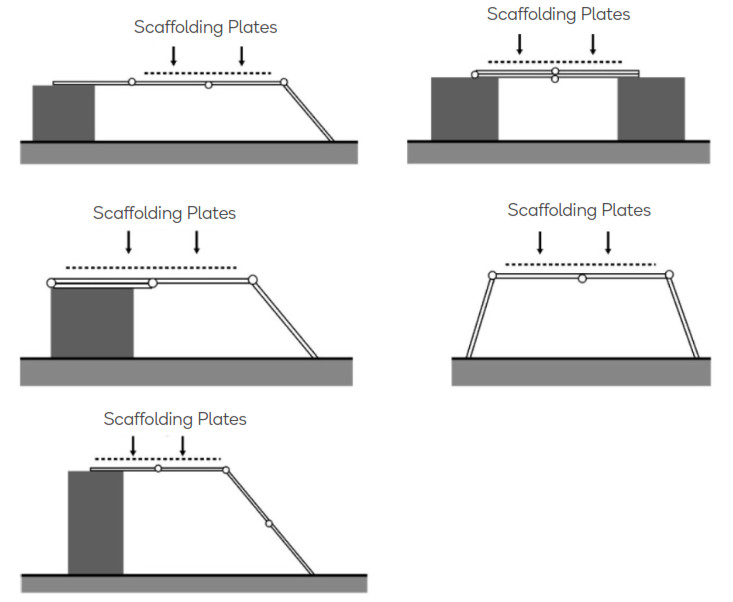
OPERATION
Note:Please note the T-shaped plastic protector. This is fitted to protect the ladder’s feet during transit. Be sure to remove this and throw it away before using the ladder.It is perfectly normal for this part to become broken or mishappen while the product is on its way to you. This means the protector has done its job, preventing the ladder from being damaged.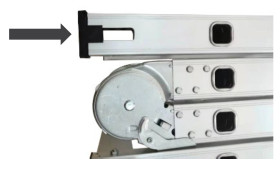 Stabilizer barIMPORTANT: The stabiliser bar should be attached before use.
Stabilizer barIMPORTANT: The stabiliser bar should be attached before use.
- Place the stabiliser bars into the ends of the side rails at each end of the ladder and secure with the nuts, bolts and washers provided (see diagram below).
- Do not use the ladder without the stabiliser bars attached unless otherwise stated.
- Always check that the stabiliser bars are secure before putting any weight on the ladder.
- Only use the stabiliser bars supplied.

Scaffolding Plate PlacementIMPORTANT:Ensure the scaffolding plates are secured into position before standing on them.
- Lay the first plates along the flat surface of the ladder. Ensure that the end lip of each plate is sitting over the outer edge of the outer-most rung.

- Using pliers, your thumbs, or any other suitable tool, push down on the pre-cut notches on the scaffolding plate until they are low enough to press against the rung below if there is any movementThis step must be performed on both sides of the ladder.

- Visually check from below that the notches are suitably placed against the rung. Once this has been done, the positioning of these pre-cut notches no longer needs to be changed.

- Position the second plate so that the pins align with the larger locking holes in the first plate. Push the pins down through the larger holes and then slide the plate outwards so that the pin is locked into position in the smaller segment of the locking hole.Below you can see the view from underneath looking upwards, firstly of the locking tabs unlocked, and secondly of them locked in position:

- This is a view from above of the tabs locked into position. Make sure the plates are locked securely and not sliding out of position on the ladder before placing any objects onto the plates and before climbing onto them yourself. Exercise extreme caution while using the ladder. Kogan.com is not liable for any damage or injury caused by misuse or incorrect use of the ladder or the scaffolding plates.

Hinge locking mechanism
- Always make sure that all ladder hinges are in the locked position before use.
- Each pair of hinges must be locked simultaneously.
Hinge locking process
- Pull out the unlocking levers to release a pair of hinges so that the locking pin is in the UNLOCKED position.
- Fold the relevant sections of the ladder to form the position required. The hinges will automatically `snap’ into position at certain angles and the locking pin will enter the LOCKED position.
 CAUTION: The hinges may appear to audibly ‘click’ into position, but always visually check that the locking indicator shows that hinge to be fully locked.
CAUTION: The hinges may appear to audibly ‘click’ into position, but always visually check that the locking indicator shows that hinge to be fully locked. - Store out of reach of children, in the storage position as shown below. Store the ladder out of direct sunlight. Storage and away from rain or other harsh weather.
- Do not attempt to use the ladder constructed into any positions other than those shown and described in this manual.
- If you have any further questions or concerns regarding the use of this product, please contact the Kogan.com customer support team.

Need more information?We hope that this user guide has given you the assistance needed for a simple set-up.For the most up-to-date guide for your product, as well as any additional assistance you may require,head online to help.kogan.com
[xyz-ips snippet=”download-snippet”]

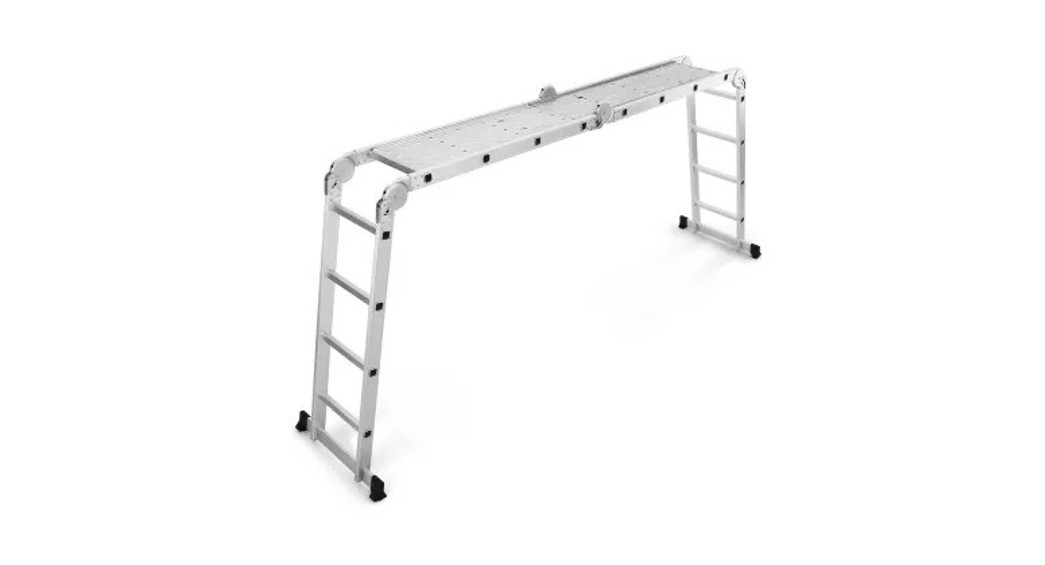
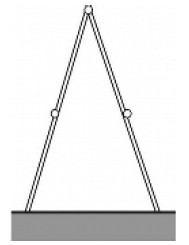
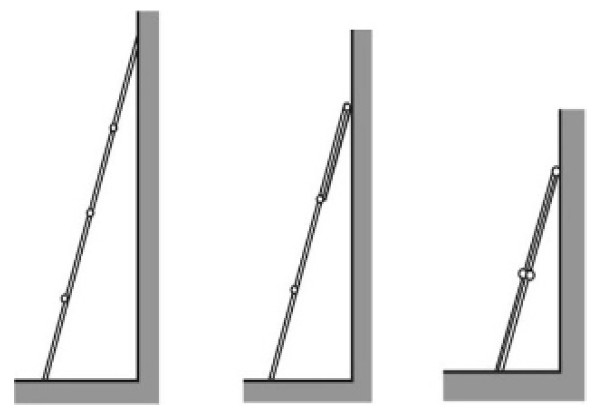
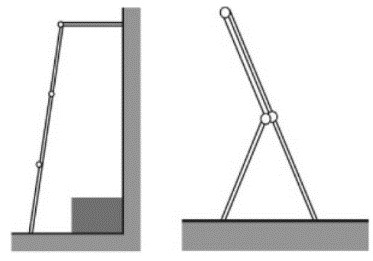

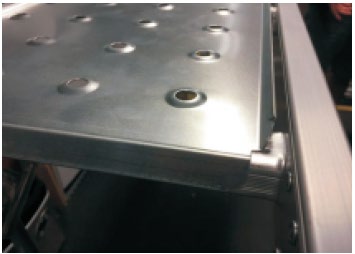
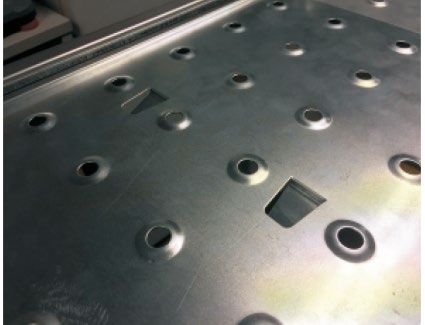
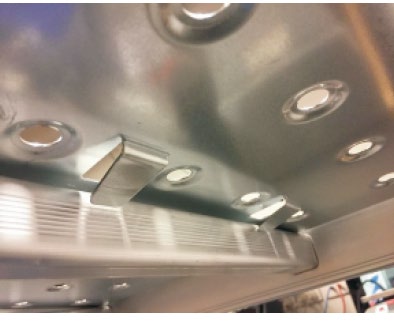
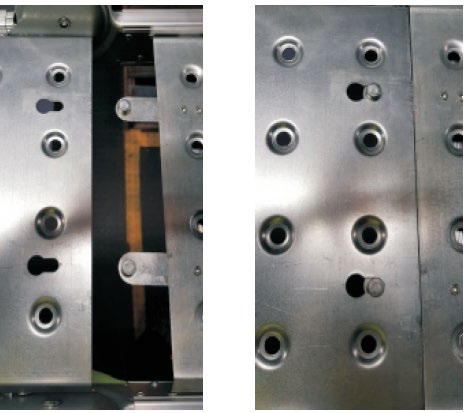
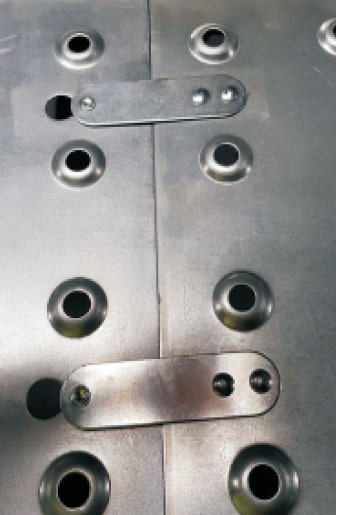
 CAUTION: The hinges may appear to audibly ‘click’ into position, but always visually check that the locking indicator shows that hinge to be fully locked.
CAUTION: The hinges may appear to audibly ‘click’ into position, but always visually check that the locking indicator shows that hinge to be fully locked.